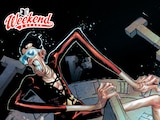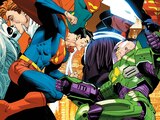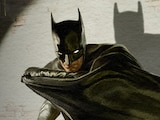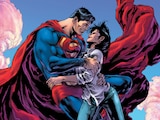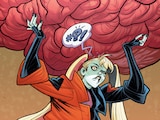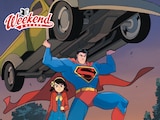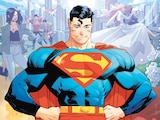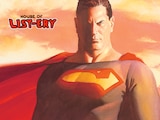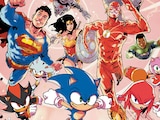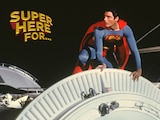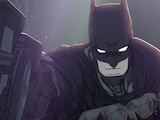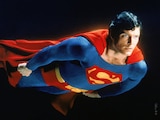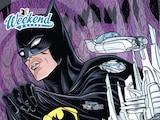Welcome back to another edition of ASK… THE QUESTION. I’m Alex Jaffe, your host of this monthly column and our weekly Trivia Tuesdays over in the DC Community, where I go by HubCityQuestion. In this feature, I take all the pressing questions that you submit about the vast scope of the DC Universe and all its inhabitants and history, and I do my level best to deliver the answers you crave. This week, we challenge the claims of a mostly forgotten Golden Age superhero, hear a quirky question about DC’s newest big screen hero, and attempt to define the concept of canon. Should be easy, right?
Second Verse, Same as the First?
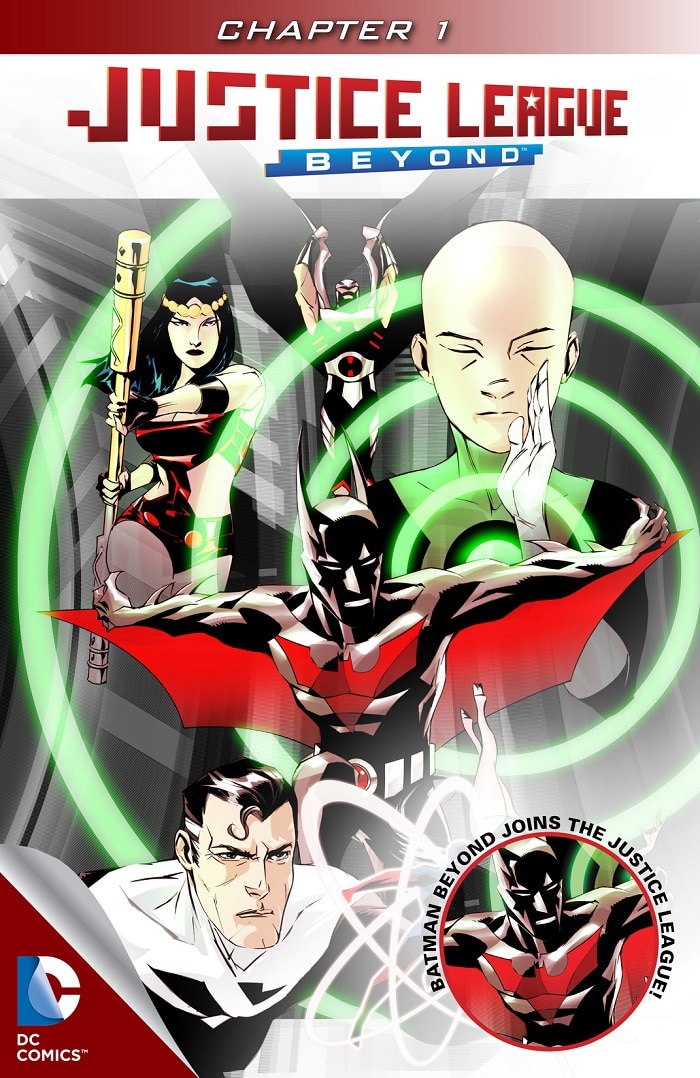
benaffleck2016.33230 asks:
Is Justice League Beyond (Earth-12) canon to the DC Animated Universe?
There are two ways to answer this question. The first one, and the one that matters, is, “What does your heart tell you?” The other is “Not strictly speaking, no.”
For any non-Millennial DC fans reading this, the DC Animated Universe (DCAU) is a term used to refer to the shared canon between the animated projects developed with Bruce Timm and Paul Dini. This includes shows like Batman: The Animated Series, Superman: The Animated Series, Justice League, Justice League Unlimited, Static Shock and Batman Beyond. (Also, a Batman Beyond spin-off about a rogue android called The Zeta Project. But we don’t really talk about The Zeta Project.)
Early in 2011, DC launched a new Batman Beyond miniseries by Adam Beechen and Ryan Benjamin, starring Terry McGinnis as Batman in the futuristic Neo Gotham, just as the Batman Beyond cartoon of 1999 had before it. The story appeared to draw on Terry’s shared history with Bruce Wayne and his legacy as established in the animated series. Interestingly, however, this story had Terry contend with a new incarnation of Hush—a villain who had never appeared in the original cartoon or any of the animated series connected to Batman Beyond. This immediately raised the question of what exactly this new Batman Beyond comic was meant to be. Was it a continuation of the series, or was it some other vision of Batman’s future inspired by both the animated series and Batman’s stories from the comics?
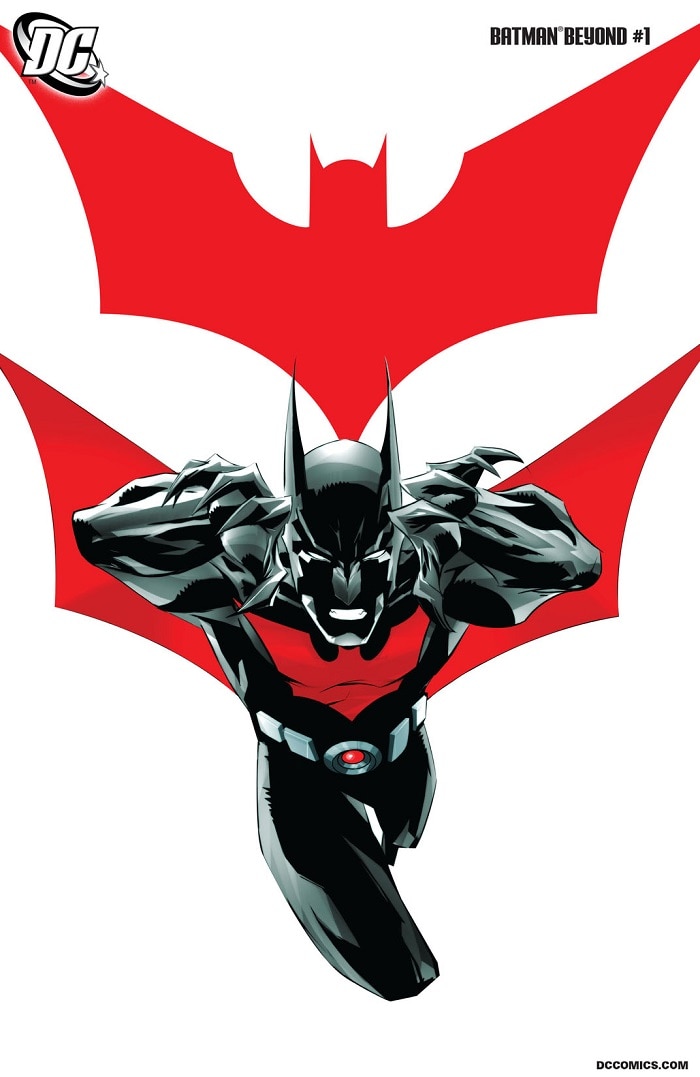
This take on Batman Beyond would go on to be developed further through a line of digital comics. Batman Beyond Unlimited, Batman Beyond 2.0 and, as you mentioned, Justice League Beyond, which explored the further adventures of the League featured in the Batman: The Animated Series episode “The Call.” In Grant Morrison’s The Multiversity, this world was given a numerical designation of Earth-12 (based on a small Batman Beyond cameo in the prior Superman/Batman comic series).
Interestingly, The Multiversity also gives us Earth-50, the universe of the tyrannical “Justice Lords” which apparently corresponds to the fallen heroes seen in the Justice League episode “A Better World.” However, as with the 2011 Batman Beyond series, there are some apparent discrepancies with the Justice Lords as they originally appeared. The Batman of Earth-50, for instance, appears to have always been plotting against the Justice Lords in secret, whereas he had to be won over by the main universe’s Batman in the original cartoon.
Eventually, a DCAU counterpart of Hush would be introduced, in Paul Dini and Alan Burnett’s Batman: The Adventures Continue—a comic which picks up where The New Batman Adventures, sequel series to Batman: The Animated Series, once left off. But since then, other discrepancies have amassed to suggest that the continuity between DCAU and the comic book multiverse’s Earth-12, intentional or not, doesn’t exactly, neatly work. In the continued projects by teams which originally worked on the fiction of the DCAU and those which have told the Batman Beyond stories of Earth-12, it seems like making these stories line up perfectly with each other isn’t the priority.
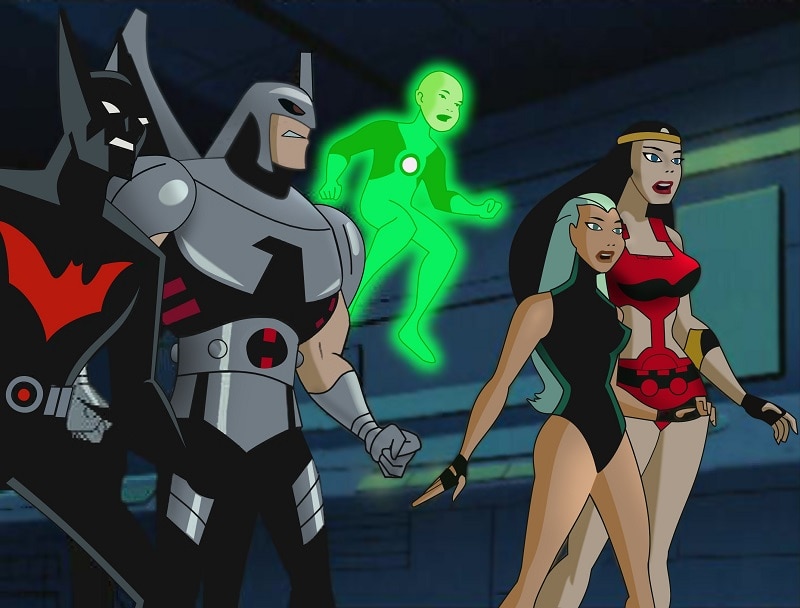
In the past, I’ve referred to what I’ve termed a “one-way canon,” where the projects which follow from an original work take its events into consideration to form its own stories, but where the primary source of continuity may not necessarily refer back to those follow-ups and spinoffs should they be continued by their original creators. It’s a situation where a secondary source would consider the primary part of its canon, but the primary wouldn’t concern itself with the events of the secondary stories to continue its own narrative. And that may be the case here, as well. But it may be easier to put it this way: Justice League Beyond, and the other comics of Earth-12, may not be in the same continuity as the DCAU series, but they are inspired by them. They exist as a tribute to the original series and are created from a source of love and respect for them which they surely share with you.
Then again, it’s not like the shows within the DCAU don’t frequently contradict minor details within themselves. That’s simply an unavoidable consequence of any long-running collaborative work with multiple large creative teams, all working at once. In the end, the canon of any reiterative fictional world is whatever you want it to be, as a viewer and reader. All art is a collaborative experience, after all, between creator and audience. Canon is personal, and the power to define it is yours.
What Those Ears Do
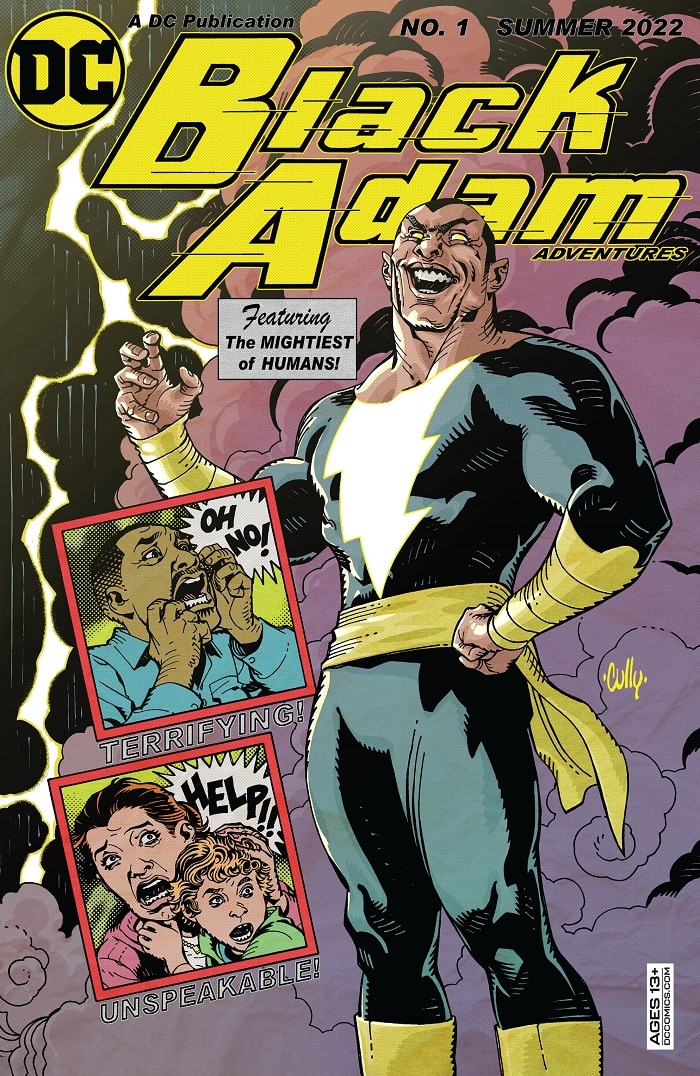
samleelongworth.81198 asks:
What’s up with comic book Black Adam’s ears?
This is a pretty good question and I wish I had a better answer for you. Although more human-shaped in recent stories, including the recent Dwayne Johnson movie, Black Adam’s ears have traditionally appeared to be pointed and elf-like, making him look somewhat inhuman. Strangely, in all the time since this character trait was introduced in 1945’s Marvel Family #1, there’s never been an explanation for this in the comics. Some have theorized that, like Billy Batson taking on an idealized form of his adult self when he transforms into Shazam, Black Adam’s ears are a subconscious manifestation of his demonic inclinations. I’ve even heard one theory from comic book editor and Shazamologist Carl Shinyama that Adam’s ears were transformed by the wizard Shazam after his fall from grace as a mark of shame to warn all who would see him of his wickedness.
I kind of like that answer for its mythological qualities and the motifs it echoes of gods and sorcerers transforming those who wronged them for their slights – like Arachne in Greek mythology, for instance, or Cain in the Bible. The flaw in these theories, however, is that during the period where Black Adam was consistently depicted with pointed ears, we do see him with that same trait while in human form, as seen in Shazam! #38 and DC Comics Presents #49. For now, we’re just going to have to chalk it up to artistic license.
Let Me Count Thy Gimmicks
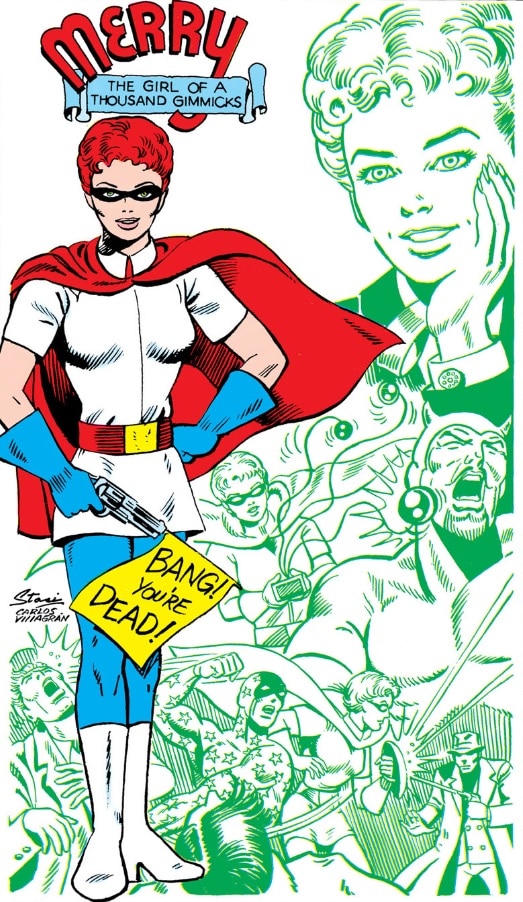
mysterious_stranger asks:
How many gimmicks does Merry, Girl of 1,000 Gimmicks, actually have?
Well, let’s work it out. I’m going to make this count as charitable as possible, because 1,000 is a pretty big number to reach for a character who’s only made 30-odd appearances in 75 years.
Merry Pemberton, adopted sister of the original Star-Spangled Kid and mother of Brainwave Jr., first appeared in 1948’s Star-Spangled Comics #81 and debuted her crimefighting persona in Star-Spangled Comics #82. Here, Merry demonstrates one gimmick in her debut confrontation with the criminal magician, the Great Presto. In a moment of distraction, Merry switches Presto’s gun for a fake that only fires handkerchiefs. We can say then that her first gimmick is the ol’ switcheroo.
In Star-Spangled Comics #83, tinkerer Merry Pemberton introduces us to her field kit for the first time, presenting herself as a puckish ally to her foster brother. Her first piece of gear: a pair of infra-red binoculars. She also debuts a whistling flail, a jack-in-the-box boxing glove, a chemical bubble-blowing gun, a weighted rope for the classic “Indian rope trick,” and your standard but ever useful smoke bomb. That brings us from one up to six. It’s also about the time that Merry takes over her foster brother’s slot in Star-Spangled Comics altogether.
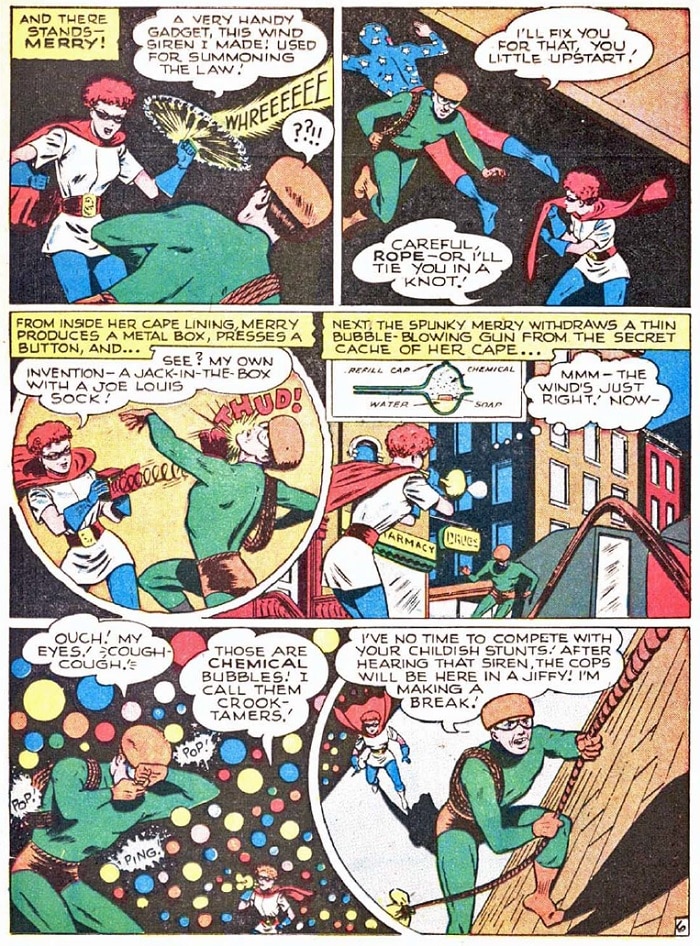
In Star-Spangled Comics #84, Merry drives a horse-drawn chariot and creates a fake blizzard with an electric fan and some soap flakes. She also pulls the switcheroo on her enemy the Rope, but that’s an old gag. The bag of fireworks she trades for his stolen gold, however, is new. Nine gimmicks.
Star-Spangled Comics #85 is the first to introduce Merry as “The Girl of 1,000 Gimmicks.” The concept of having multiple gimmicks itself, I believe, should be counted as its own gimmick. Not to mention using a lasso tied to a pepper shaker to make bandits sneeze from afar, a wind gun with “almost the force of a tornado,” a magnet on a string for disarming enemies, the ability to grab onto a branch when launched off a teeterboard by a horse, and painting faces on balloons to deceive enemies about the allies at her aid. That brings us to fifteen gimmicks. Over 1% of the way to the advertised thousand, now.
Star-Spangled Comics #86 sees Merry using spring-loaded steel tape with a hook at the end as an early grappling hook, flour bombs and a Native American disguise kit. That last one is probably not a gimmick Merry will be returning to, but it gets us to eighteen gimmicks.
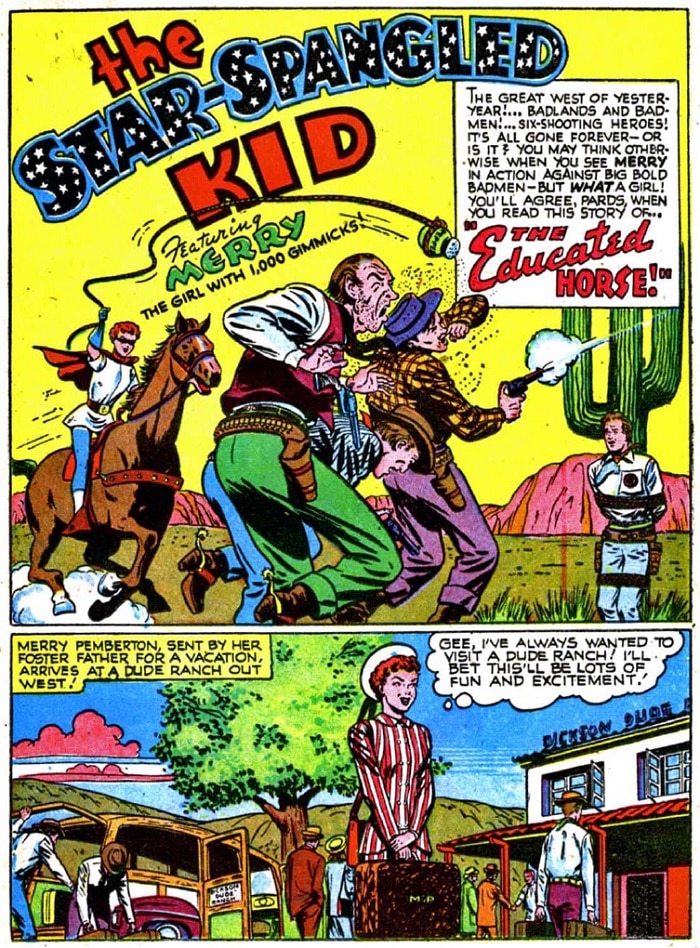
Star-Spangled Comics #87 adds ice-skating, a small hand-held bullet shield, a Joker-style trick flag gun, and an eight-balled popgun she calls “the octopus” to Merry’s repertoire. Gimmick count: 22.
Star-Spangled Comics #88, wherein Merry defends the honor of a “tomboy,” sees her wielding a putty-ball gun, a super high-speed bicycle, a handy pocket mirror for light reflection, self-lighting firecrackers and a smoke bomb launcher (which we’re counting as a separate gimmick from the smoke bombs used earlier out of a sense of charity). We’re at 27 and counting.
The lead feature in Star-Spangled Comics #89 gives us a look inside the capsules of Batman’s utility belt. But in Merry’s feature, the Girl of Numerable Gimmicks wields an arsenal of a pocket fire extinguisher, a wire web, a magnesium flare and a simple jackknife. She even breaks out the old boxing glove trick from Star-Spangled Comics #83 and follows it up with judicious use of a hornet’s nest—“nature’s gimmick,” as Merry calls it. We’ll count it. 32.
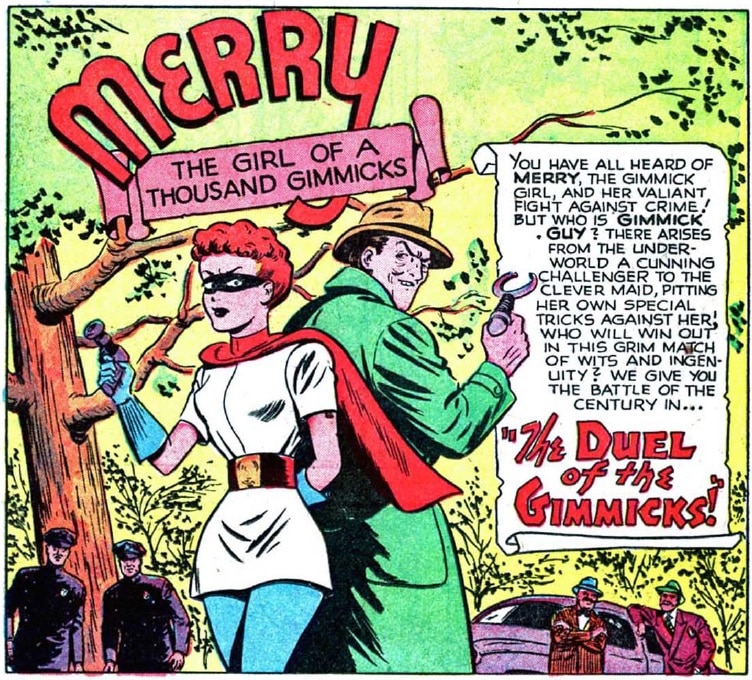
Merry’s final starring feature was in 1949’s Star-Spangled Comics #90, “The Duel of the Gimmicks” against her newly introduced counterpart, “Gimmick Guy.” For this final showdown, Merry produces a bulletproof baseball mitt, a dusting powder spray, a spark gun, a telescoping mule leg, two intentional backfiring gimmicks—a squirt gun and a devil jack-in-the-box—a sleeve-loaded rocket firecracker and Merry’s own cape. She finishes Gimmick Guy off with her wire web from the previous issue. That brings her total, at the end of her auspicious ten-issue run, to a total of 40 exactly. Which is actually the number I cited as a rough estimate the first time this question was presented to me!
That would be Merry’s last gimmick until 1999, when she reappeared as a member of “Old Justice” in Young Justice #16. Here, an elderly Merry appears to Red Tornado through a pocket holographic projector of her own design and reveals herself to have faked her death—a skill I’m personally counting as another gimmick—and wields a hand-held, trigger-operated net and a telescoping boxing glove. Merry produces a more complex, full-body holographic projection of herself still in Young Justice #17.
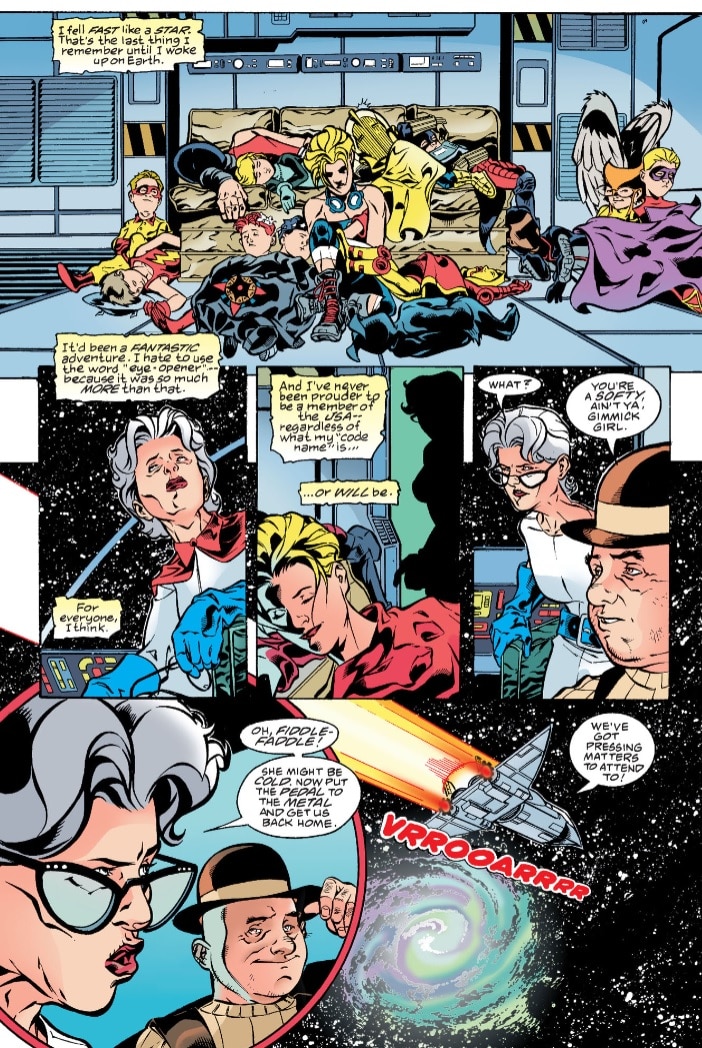
Young Justice #19 has Merry experimenting further still with holographic technology, using it to capture the three-dimensional image of a group of enemies. The Young Justice “Sins of Youth” event sees Merry showing off some gas-filled marbles, a speed-sapping body spring trap, fluency in Latin, acute political acumen, and a brand-new gimmick towards the new Star-Spangled Kid, Courtney Whitmore: empathy. It’s worth noting that by this time, in her late career, Merry had changed her sobriquet to “Merry, the Gimmick Girl,” apparently abandoning her lofty goal of a thousand. Nevertheless, the count stands at 51.
Which feels a little bit shy, doesn’t it? About 949 gimmicks too few. Unless, perhaps we consider one last gimmick for the Gimmick Girl: the gimmick of exaggerating the range of her gimmicks. That leaves us with a nice, satisfying 52.
It also leaves us at the end of this feature, for at least another month. I’ll see you all again around this time in December with a new list of mysteries as fresh as the fallen snow. All you need to do is visit my office in the DC Community, where the power is in your hands to ASK… THE QUESTION.
Alex Jaffe is the author of our monthly "Ask the Question" column and writes about TV, movies, comics and superhero history for DC.com. Follow him on Twitter at @AlexJaffe and find him in the DC Community as HubCityQuestion.
NOTE: The views and opinions expressed in this column are solely those of Alex Jaffe and do not necessarily reflect those of DC Entertainment or Warner Bros.

